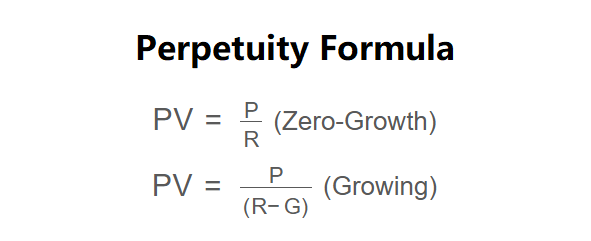 Home
Home
 Back
Back

Definition: The Perpetuity Calculator computes the present value of an infinite series of equal cash flows received at regular intervals, with options for zero-growth or growing perpetuities.
Purpose: It helps investors and financial analysts value financial instruments like preferred stocks or consols, which provide perpetual payments, aiding in investment decisions.
The calculator uses the following formulas:
\( \text{PV} = \frac{\text{P}}{\text{R}} \) (Zero-Growth)
\( \text{PV} = \frac{\text{P}}{(\text{R} - \text{G})} \) (Growing)
Where:
Steps:
Calculating perpetuity is essential for:
Example 1 (Zero-Growth): Calculate the present value of a perpetuity with a $1,000 annual payment and a 5% discount rate:
Example 2 (Growing): Calculate the present value with a $1,000 initial payment, 5% discount rate, and 2% growth rate:
Q: What is a perpetuity?
A: A perpetuity is a stream of equal cash flows that continues indefinitely, such as certain bonds or preferred stocks.
Q: Why must the growth rate be less than the discount rate?
A: If the growth rate equals or exceeds the discount rate, the present value becomes infinite, which is not feasible.
Q: Can perpetuities exist in practice?
A: Yes, examples include consols (redeemed in 2015) and some preferred stocks, though they are rare today.